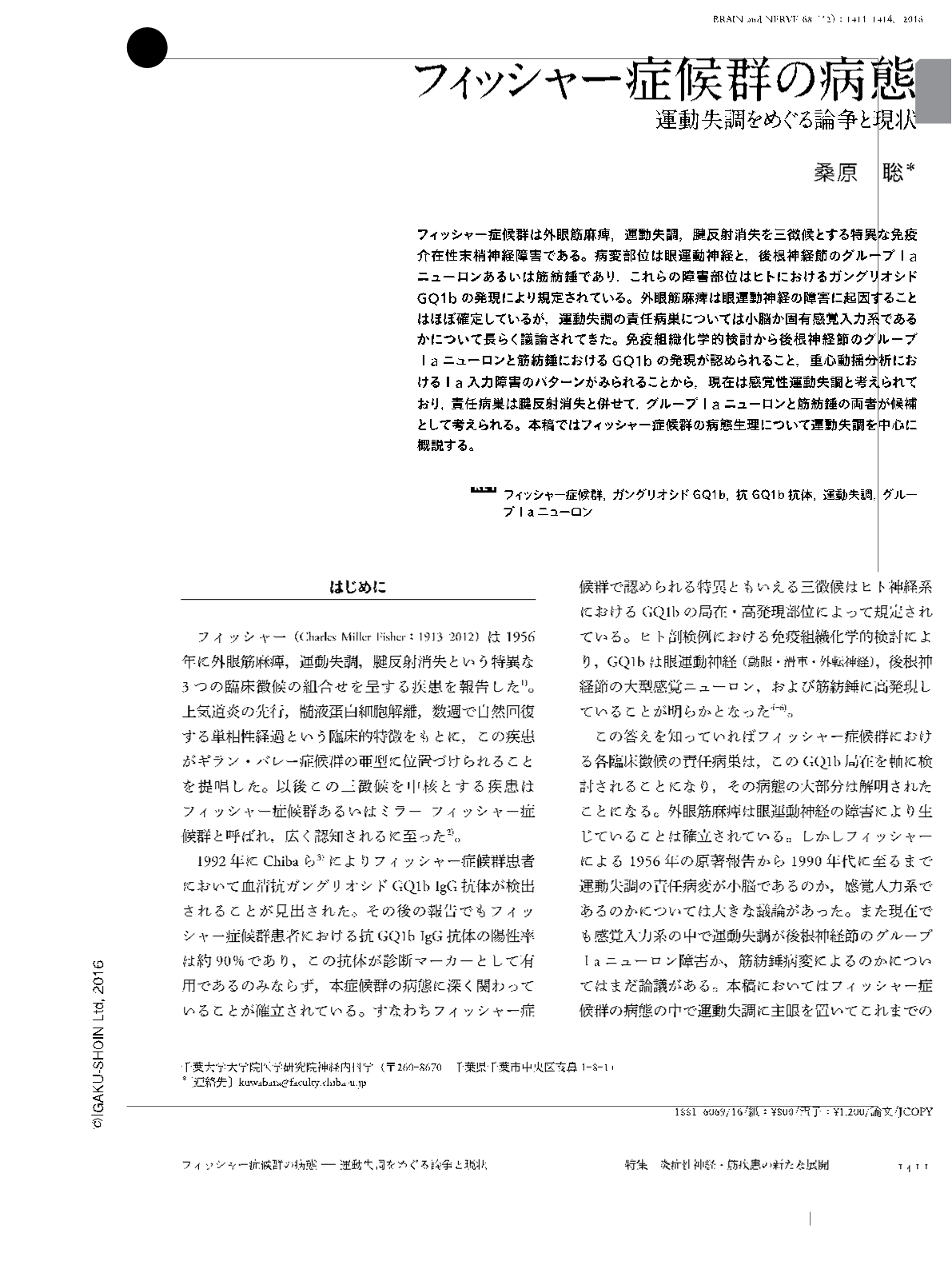Japanese
English
- 有料閲覧
- Abstract 文献概要
- 1ページ目 Look Inside
- 参考文献 Reference
フィッシャー症候群は外眼筋麻痺,運動失調,腱反射消失を三徴候とする特異な免疫介在性末梢神経障害である。病変部位は眼運動神経と,後根神経節のグループⅠaニューロンあるいは筋紡錘であり,これらの障害部位はヒトにおけるガングリオシドGQ1bの発現により規定されている。外眼筋麻痺は眼運動神経の障害に起因することはほぼ確定しているが,運動失調の責任病巣については小脳か固有感覚入力系であるかについて長らく議論されてきた。免疫組織化学的検討から後根神経節のグループⅠaニューロンと筋紡錘におけるGQ1bの発現が認められること,重心動揺分析におけるⅠa入力障害のパターンがみられることから,現在は感覚性運動失調と考えられており,責任病巣は腱反射消失と併せて,グループⅠaニューロンと筋紡錘の両者が候補として考えられる。本稿ではフィッシャー症候群の病態生理について運動失調を中心に概説する。
Abstract
Fisher syndrome is regarded as a peculiar inflammatory neuropathy associated with ophthalmoplegia, ataxia, and areflexia. The disorder is associated with preceding infection, cerebrospinal fluid albumino-cytological dissociation, and spontaneous recovery, and regarded as a variant of Guillain-Barré syndrome. The discovery of anti-GQ1b IgG antibodies led to dramatic advances in understanding the pathophysiology of Fisher syndrome. The lesions in Fisher syndrome are determined by expression of ganglioside GQ1b in the human nervous system. This review article focuses on the pathophysiology of ataxia in Fisher syndrome. Current evidence suggests that antibody attack on GroupⅠa neurons in the dorsal root ganglia is mainly responsible for the sensory ataxia. Involvement of the muscle spindles might also contribute to the development of ataxia.

Copyright © 2016, Igaku-Shoin Ltd. All rights reserved.


